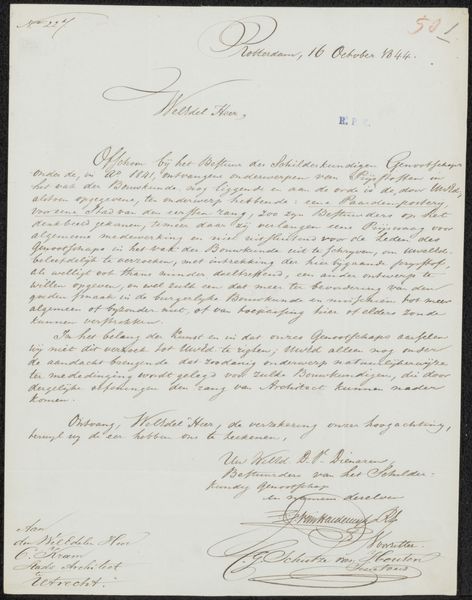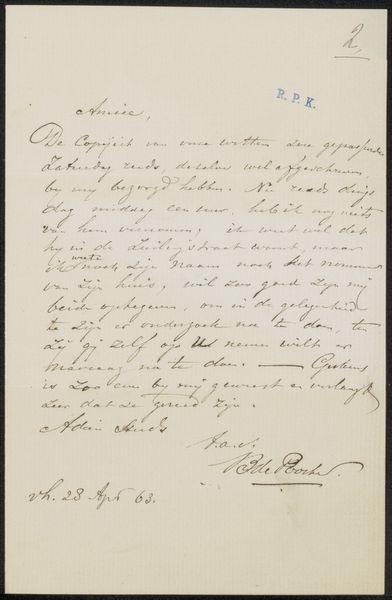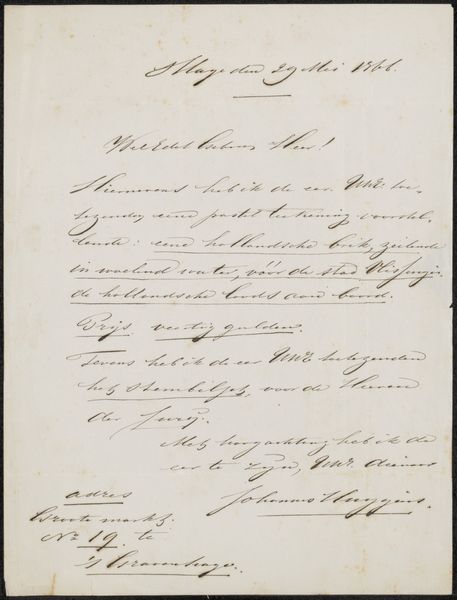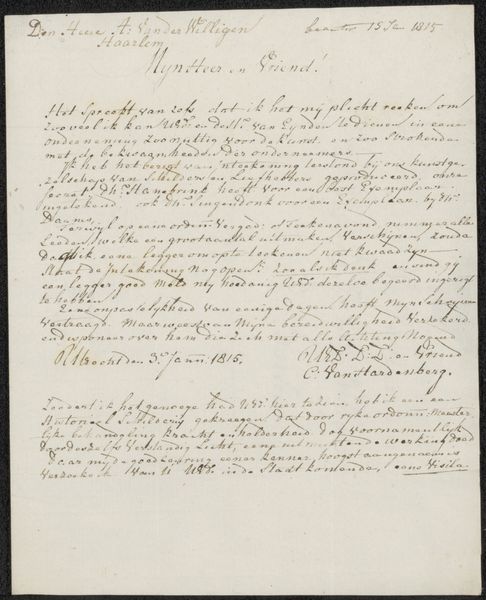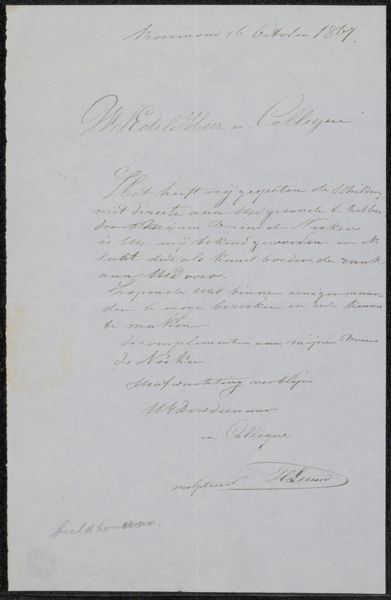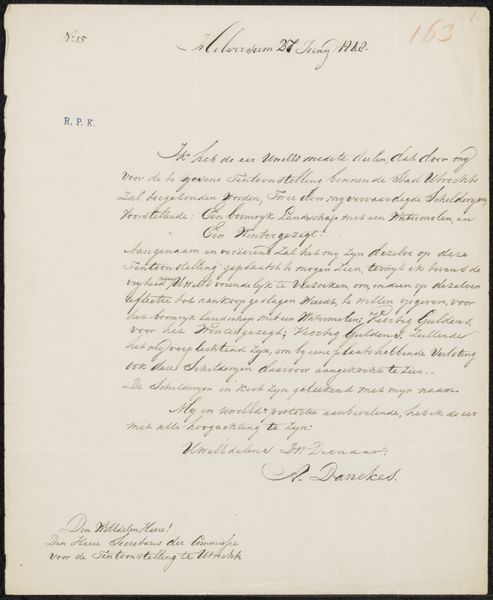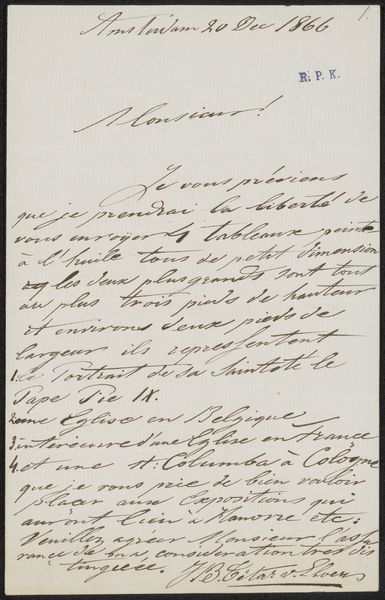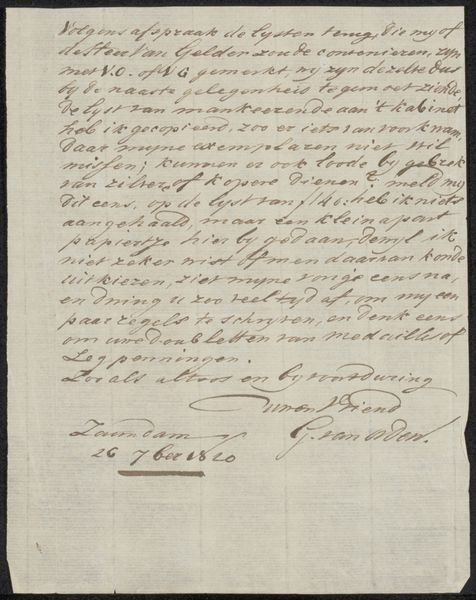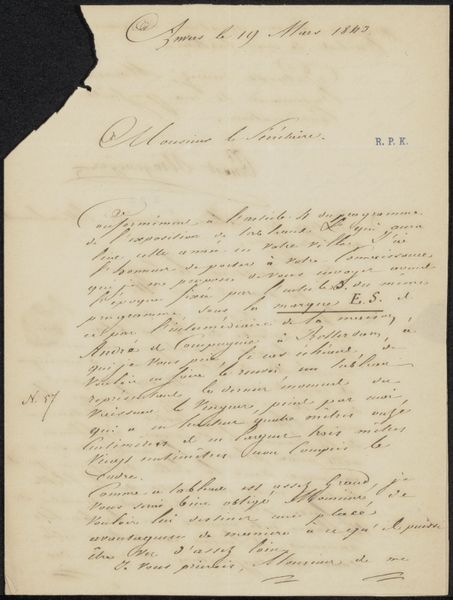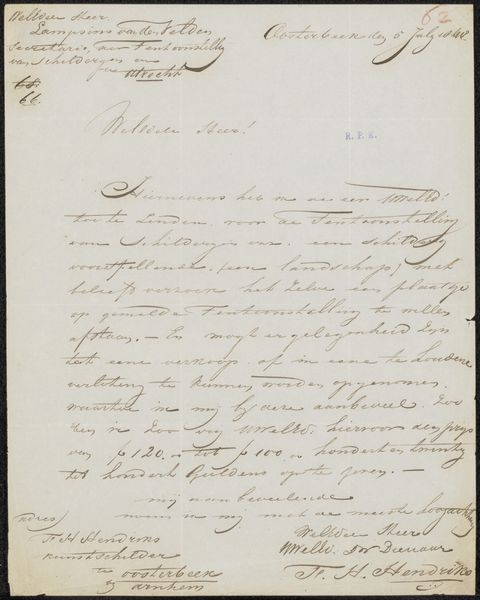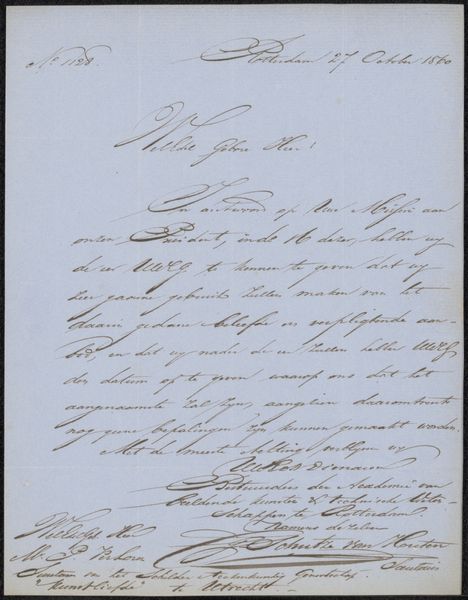
Brief aan de commissie van de Tentoonstelling van Levende Meesters in Utrecht Possibly 1866
0:00
0:00
drawing, paper, ink
#
portrait
#
drawing
#
paper
#
ink
#
calligraphy
Copyright: Rijks Museum: Open Domain
Curator: At first glance, I’m struck by the immediate impression of faded ink and the very clear presence of the artist, Joosten’s, hand. Editor: Indeed. We are looking at "Brief aan de commissie van de Tentoonstelling van Levende Meesters in Utrecht," potentially from 1866. This piece, executed with ink on paper, exists as more than just a historical document. The artistry and skill put into this calligraphy are apparent; it is so aesthetically beautiful. Curator: Absolutely. Letters always strike me as intimate and fascinating documents, carrying so much history. I’m interested in understanding the role letters played during the 19th century, considering power structures, access to literacy, class and other ways this letter embodies identity, perhaps class and professional identity as well. Editor: The act of physically creating this letter–mixing the ink, the preparation of the paper, the precise hand movements required for such delicate lettering – it speaks volumes. What pen did he use? Where did he learn calligraphy? These seemingly small things show us how Joosten worked, his training and the context surrounding the act of creation. Also, look at how much blank space is deliberately left on the page to center the flow of communication in ink! Curator: I wonder if this letter was viewed as merely a means of communication or whether Joosten understood the artistic merit of his penmanship. Does the language reflect societal norms of the time, power dynamics in place? The level of formality suggests something. How does that compare with artistic values, say, about drawings during this time? I see a tension there between how artwork got shown or the political forces behind it. Editor: Thinking about it in terms of materiality, you see how paper, often seen as a humble material, is elevated here through craftsmanship. Calligraphy becomes a vehicle to transform raw material to art itself, it embodies ideas of craft, skill, maybe patience. A person in history, but also very physical, artistic handwork with tools! Curator: It makes you ponder authorship, how the message is shaped through both writing and materiality. It challenges any easy definition we have around authorship and art making, doesn’t it? Editor: Indeed. By investigating the materials and labor involved in making this piece, we gain richer insights into how social practice is embedded in it, while also gaining perspective into past means of artistic production. Curator: Precisely. It helps us reassess history while considering what voices or artistry were present or absent in dominant dialogues during that period. Editor: I appreciate now, thinking of material conditions and culture, what it brings in terms of context. Thank you for pointing that out.
Comments
No comments
Be the first to comment and join the conversation on the ultimate creative platform.
